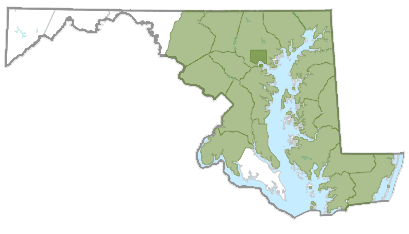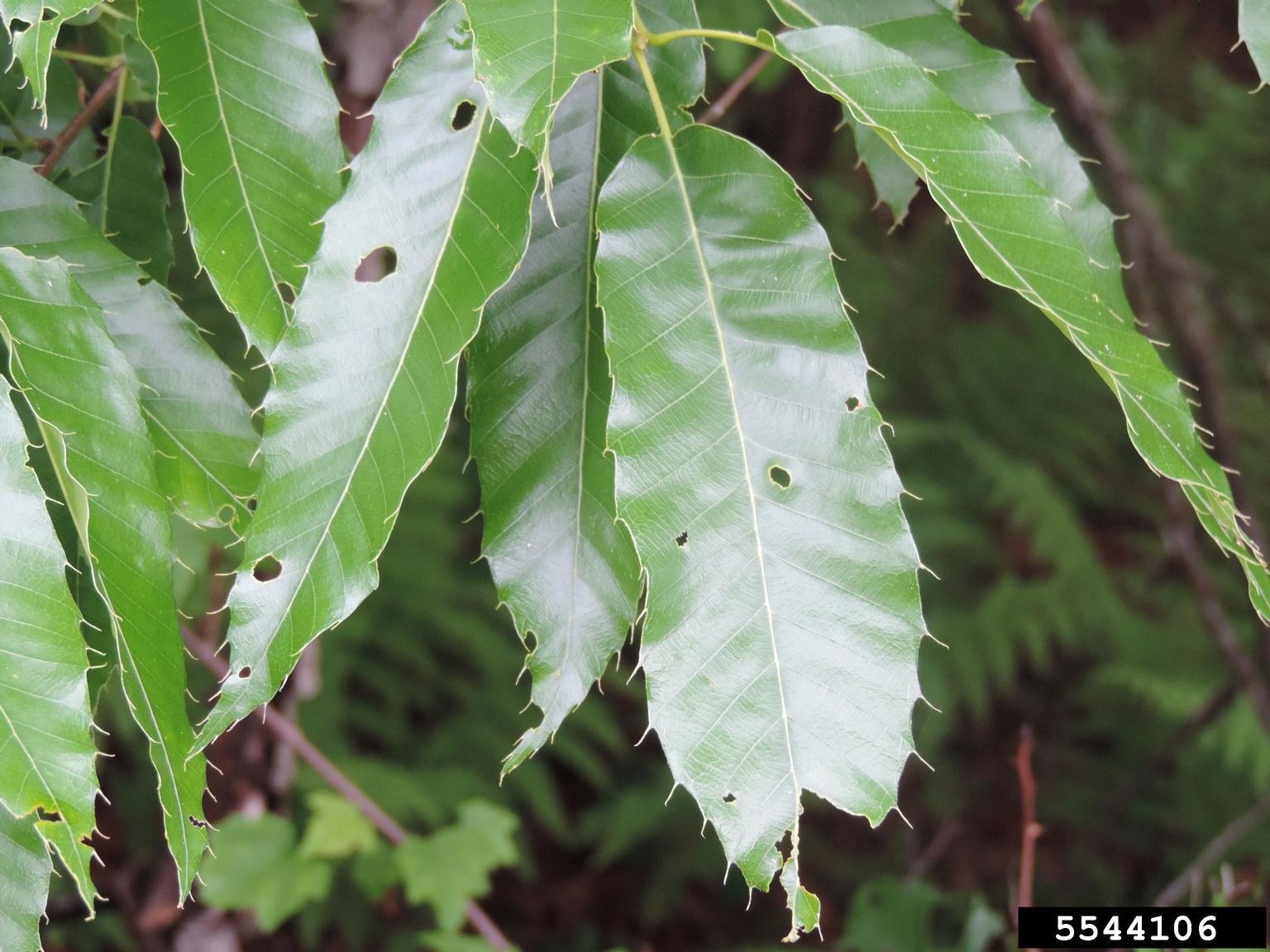From Spring 2024 issue of Branching Out. Subscribe to Branching Out here. Read more Invasives in Your Woodland articles here. This article contains information current as of date of publication.
Bring up invasive tree species in Maryland among landowners and other interested parties and several will probably be mentioned: Callery pear, that line sections of I-70; tree-of-heaven and its connection to spotted lanternfly, or princess tree and its showy springtime flowers. Perhaps the discussion will turn towards tree families that have both native and non-native representatives, such as the maples. To that last list, include the oaks. Many are native to the state (including black, red, chestnut, scarlet, and white, the state tree); another, the sawtooth oak, is not… and, depending on your location, may or may not be designated as an invasive.
Sawtooth oak (Quercus acutissima) is native to Asia, from northeast India to Korea, and was introduced to the eastern U.S. in 1920. It has gained popularity over the last 50 years as a street tree because it tolerates poor and dry soils, establishes and grows quickly. Consequently, it has been planted throughout the east, Midwest, and south. Because it produces copious amounts of acorns in late summer and early fall, earlier than some native oaks, some advocate planting it for wildlife, particularly turkeys. In fact, a cultivar called the Gobbler Sawtooth debuted in 1986 with smaller acorns, especially sized for turkeys’ consumption.

from Maryland Biodiversity Project.
However, sawtooth oaks have adapted to a wide area of the nation and now are escaping from plantings into natural areas, particularly in the eastern states, where they can outcompete native species. The Maryland Biodiversity Project reports it is found in most Maryland counties (see map at right).
What is it?
Sawtooth oak is a large deciduous tree that can grow up to 50 feet in height. While it tolerates many soil and shade conditions, it prefers well-drained locations with full sun. It does not grow well in areas subject to flooding. According to a National Park Service publication, “One observer noted that it readily seeds into woodland edges, meadow habitats and open areas... it is fast growing, tolerant of a wide range of moisture and temperature conditions and can become a troublesome invasive.”
How does it spread?
Sawtooth oaks spread primarily via their fruit (acorns). Animals will spread the acorns into new habitats via droppings or via forgotten caches that germinate into seedlings.
How can I identify it?
As a member of the red oak family, sawtooth oaks have several characteristics that aid identification. Juvenile trees have a pyramidal shape that becomes more symmetrical as they mature. At maturity, the bark is ragged, ridged, and furrowed, and dark grey to grey-brown in color. Trees bear acorns at least every two years, if not every year. The acorns are small, ranging from 5/8-3/4 inch long and are enclosed in cups with long, frilly scales. Approximately 2/3 of the nut is covered by the cup.
The glossy leaves are oval and oblong, with many serrations ending in a bristle tips, resembling a saw blade. They are alternate on the stem, and like many oaks, the leaves are marcescent during the winter. See the photo gallery below.
How can I control it?
Presently, sawtooth oaks are not considered an invasive species of concern in many areas; in fact, the Maryland state nursery offers gobbler sawtooth seedlings for sale. Overall, the best way to control its spread is to not plant it. In areas where it is already established, such as edge habitats, regular, annual and semiannual mowing reduces the spread. Control large trees by cutting and grinding the stump. Girdling and using hack and squirt with glyphosate is also effective.
For more information:
Learn more about sawtooth oak:
Sawtooth Oak (Plant Invaders of Mid-Atlantic Natural Areas)
Quercus acutissima (NC State Extension)
Sawtooth Oak (Ohio Dept. of Natural Resources)
